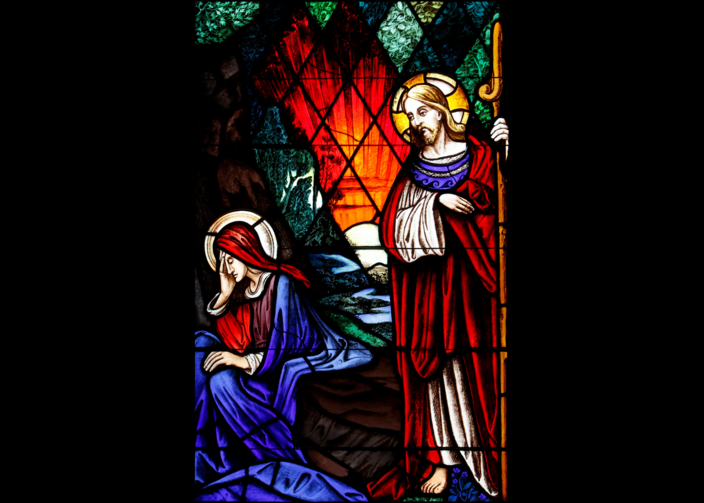A Reflection for the Feast of St. Mary Magdalene
Find today’s readings here.
I will rise then and go about the city;
in the streets and crossings I will seek
Him whom my heart loves.
I sought him but I did not find him. (Song 3:2)
Today is the feast of St. Mary Magdalene, and I really struggled coming up with what to write about her. My home church is St. Peter’s, so I’ve always felt more of a connection to him in the resurrection story than to Mary Magdalene. And everyone already knows about her: the seven demons, coming to the tomb first, et cetera. What can I say that would be new?
Church fathers and everyone from homilists to artists throughout the centuries were also not sure what to make of the “apostle to the apostles.” As is the case with most people from 2,000 years ago, we are not entirely sure who Mary of Magdala was. Was she really from Magdala? Mary was a common name in Jesus’ day; was she the same as Mary, the sister of Martha and Lazarus? Was she the sinful woman who washed Jesus’ feet with perfumed oil? Were the seven demons exorcised from her the seven deadly sins that she had committed?
Most of these are probably conflations or untruths. There were likely many women who followed Jesus named Mary; other sinful women were likely around him and were cleansed. What do we know for sure about Mary Magdalene? She has been viewed in recent centuries as a penitential sinner—all well and good, except that the Gospels do not mention her specifically as a sinful person, only one with seven demons (and demons in the Bible could be any matter of mental or physical illnesses, or real demons, that possessed a person). She is far more an intercessory character in the Bible.
In today’s Gospel, Mary repeats the sentiment of the bride in Song of Songs: “I sought him whom my heart loves but could not find him.” She weeps outside the tomb because Jesus is gone, then Jesus appears to her and tells her to share the news of his coming ascension with the apostles. She is the first to whom Jesus appears and gets to tell Jesus’ closest friends and followers about the resurrection. In this way, Mary Magdalene acts as the apostle to the apostles—one would assume that Peter or John should have received the vision instead, yet it is Mary, not one of the twelve, to whom Jesus appears.
Mary Magdalene, like Mary the Mother of God, has a special closeness to Jesus that we can see in today’s readings and feast. It is easy to dismiss because we know so little and because she is not one of the Twelve. But that mystery does not prevent Mary Magdalene from being a prized intercessor, one whom we should call on more often.








